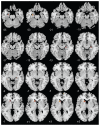Structural MRI correlates for vulnerability and resilience to major depressive disorder
- PMID: 20964952
- PMCID: PMC3004971
- DOI: 10.1503/jpn.090186
Structural MRI correlates for vulnerability and resilience to major depressive disorder
Abstract
Background: In major depressive disorder (MDD), it is unclear to what extent structural brain changes are associated with depressive episodes or represent part of the mechanism by which the risk for illness is mediated. The aim of this study was to investigate whether structural abnormalities are related to risk for the development of MDD.
Methods: We compared healthy controls with a positive family history for MDD (HC-FHP), healthy controls with no family history of any psychiatric disease (HC-FHN) and patients with MDD. Groups were age- and sex-matched. We analyzed data from high-resolution magnetic resonance imaging using voxel-based morphometry. We performed small volume corrections for our regions of interest (hippocampus, dorsolateral [DLPFC] and dorsomedial prefrontal cortex [DMPFC], anterior cingulate cortex [ACC] and basal ganglia) using a family-wise error correction (p < 0.05) to control for multiple comparisons.
Results: There were 30 participants in the HC-FHP group, 64 in the HC-FHN group and 33 patients with MDD. The HC-FHP group had smaller right hippocampal and DLPFC grey matter volumes compared with the HC-FHN group, and even smaller right hippocampal volumes compared with patients with MDD. In addition, the HC-FHP group exhibited smaller white matter volumes in the DLPFC and left putamen but also greater volumes in 2 areas of the DMPFC compared with the HC-FHN group. Patients with MDD exhibited smaller volumes in the ACC, DMPFC, DLPFC and the basal ganglia compared with healthy controls.
Limitations: The retrospective identification of family history might result in a bias toward unidentified participants in the control group at risk for MDD, diminishing the effect size.
Conclusion: Volume reductions in the hippocampus and DLPFC might be associated with a greater risk for MDD. The HC-FHP group had smaller hippocampal volumes compared with patients with MDD, which is suggestive for neuroplastic effects of treatment. The HC-FHP group had not yet experienced a depressive episode and therefore might have been resilient and might have had some protective strategies. Whether resilience is associated with the larger white matter volumes in the DMPFC (e.g., owing to compensatory, neuroplastic remodelling mechanisms) needs to be confirmed in future studies.
Figures


References
-
- Prince M, Patel V, Saxena S, et al. No health without mental health. Lancet. 2007;370:859–77. - PubMed
-
- Surtees PG, Wainwright NW, Willis-Owen SA, et al. Social adversity, the serotonin transporter (5-HTTLPR) polymorphism and major depressive disorder. Biol Psychiatry. 2006;59:224–9. - PubMed
-
- Gillespie NA, Whitfield JB, Williams B, et al. The relationship between stressful life events, the serotonin transporter (5-HTTLPR) genotype and major depression. Psychol Med. 2005;35:101–11. - PubMed
-
- Caspi A, Sugden K, Moffitt TE, et al. Influence of life stress on depression: moderation by a polymorphism in the 5-HTT gene. Science. 2003;301:386–9. - PubMed
-
- Rice F, Harold GT, Shelton KH, et al. Family conflict interacts with genetic liability in predicting childhood and adolescent depression. J Am Acad Child Adolesc Psychiatry. 2006;45:841–8. - PubMed
Publication types
MeSH terms
LinkOut - more resources
Full Text Sources
Medical

